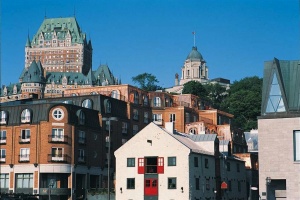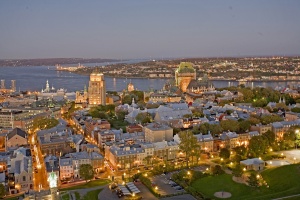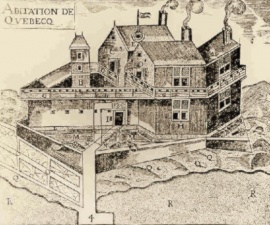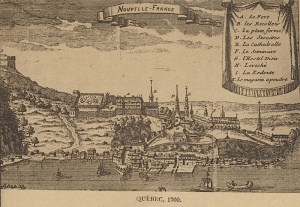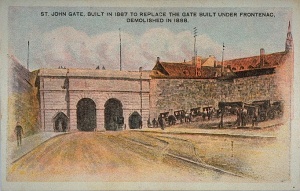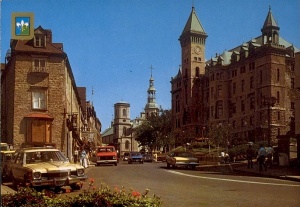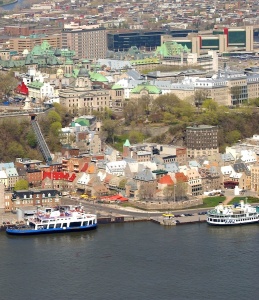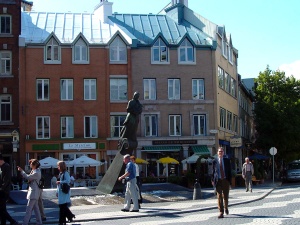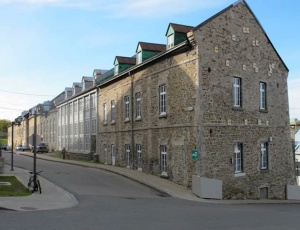
Old Quebec, a UNESCO World Heritage site
par Viau, Serge
Old Quebec, a historic district of Quebec City, was inscribed on UNESCO’s World Heritage List in 1985. At that time it was characterized as “the cradle of the French civilization in America”, a “fortified city” and “always animated”. As the administrative centre of New France, governing a territory that spanned almost a third of North America, the city of Quebec served as headquarters for civil, judicial and religious governance under the French regime. Despite attacks, battles, regime changes and the ups and downs of economic life, Quebec City has maintained its role as capital, preserved its vitality or restored it during more difficult times, and protected and developed its heritage. Because the people living and working there consider its heritage to be their own, Old Quebec is an excellent example of a living urban heritage environment that continues to evolve.
From history to heritage
Under the French regime, the city of Quebec became the administrative centre of New France, which at times occupied a territory reaching from Labrador to Louisiana, and from the Atlantic to west of the Mississippi and of Hudson Bay. In this way French-speaking people spread throughout North America and established many of the continent’s settlements and towns. After the conquest in 1759, Quebec remained the capital of Lower Canada. It was at one time the capital of the Province of Canada, and then became the capital of Quebec, the only province in Canada whose official language is French. Quebec City is considered to be the cradle of French civilization in North America, a fact recognized by UNESCO. In addition, the fortifications and the Citadelle, built according to the principles of French engineer Vauban, are the most complete fortifications still standing in North America. This unique character gives the city its outstanding universal character that UNESCO has recognized by inscribing Old Quebec on the World Heritage List. (NOTE 1).
This recognition is also based on a criterion that emphasizes the living character of the site (NOTE 2). For Quebec City, this criterion highlights its role, both past and present, in the preservation and strengthening of French identity in North America. It recognizes the fact that the historic district of Old Quebec, in both its urban structure and its present vitality, is a living heritage in constant evolution, but still remains faithful to its origins and fundamental nature.
Building and fortification of the city
After Jacques Cartier’s unsuccessful attempts at settlement in the 16th century, Samuel de Champlain on July 3, 1608, settled at the foot of Cap Diamant and erected wooden buildings surrounded by a stockade (NOTE 3).
This site was chosen for its strategic geographic features: the promontory of Quebec and the narrowing of the river provided excellent defensive features (NOTE 4). Champlain observes: “I searched for a place suitable for our settlement, but I could find none more convenient or better situated than the point of Quebec” (NOTE 5). In 1620 Champlain built the first Fort Saint-Louis on the heights of Cap Diamant, also surrounded by a wooden stockade. Between 1620 and 1745, more defense works of wood, earth and stone were built on the promontory and by the river.
Josué Boisberthelot de Beaucours erected the western rampart in 1693 at the request of Governor Louis de Buade, Comte de Frontenac, to prevent any attacks made by land. Two remnants of this wall are still in existence: the Cap-aux-Diamants Redoubt inside the Citadelle, and the place known as Cavalier-du-Moulin at the end of rue Mont-Carmel.
In 1745 construction of the fortifications as they are known today began, based on plans set out 1716 by New France’s chief engineer, Gaspard-Joseph Chaussegros de Léry (NOTE 6). Construction was almost complete at the time of the siege of Quebec in 1759, but the battle took place outside the fortifications on the Plains of Abraham. It was the British, in particular the engineers William Twiss and Gother Mann, who would complete the city’s fortifications, adding gates, exterior works and four Martello towers to serve as outposts (NOTE 7). A temporary citadel was erected from 1806 to 1808, and the permanent citadel was built between 1820 and 1831 following the plans of engineer Elias Walker Durnford.
Protecting heritage amid the pressures of modern life
As the city became more urban, pressure increased to demolish the fortifications, in particular those on the west side. This undertaking began in 1871 after the British garrison left. The gates and some of the outwork were destroyed in order to improve access to the old city and to recover some of the land for newer buildings. The arrival of a new governor general, Lord Dufferin (NOTE 8), in 1872 was a major turning point in the conservation and the development of the fortifications in Quebec. Moved by a love for military heritage and by the charms of Quebec City, he proposed that a walkway be built on the fortifications with a park on either side, that the demolished gates be rebuilt so as to enlarge access, and that Terrasse Durham (NOTE 9) be extended to the Citadelle (NOTE 10). Lord Dufferin’s proposals received enthusiastic public support.
In 1928 the provincial government of Quebec created the Commission d’urbanisme et de conservation de Québec, with special powers to protect the architectural heritage of Old Quebec, which had become an important tourist attraction and was being subjected to considerable pressure to change. The results were favorable in some respects, less so in others: numerous demolitions, ill-suited structures, the invasion of the automobile, etc. In addition, fires (in some cases arson) created significant gaps in the urban framework. Many of the larger institutions moved from Old Quebec, among them Université Laval. Disrepair increased and security problems developed.
In the 1960s public authorities intervened more effectively (NOTE 11). The provincial government of Quebec designated the historic district of Old Quebec in 1963, began restoration of Place Royale in 1972, and established there the Museum of Civilization in 1985-1988. The city created a task force that produced a plan for redeveloping Old Quebec (Concept général de réaménagement du Vieux-Québec, 1970), and in response to pressure from citizens, rezoned the area so as to restrict uses harmful to neighbourhood life. By several programs, the city encouraged residential uses of property. The government of Canada restored the fortifications, as well as Artillery Park (beginning in 1970) and redeveloped the Old Port (1979-1984), making it more accessible to the public. The appearance of Old Quebec was improved substantially: streets and public places were revitalized, Hydro-Quebec buried wires, while signage and traffic signals were redone from top to bottom.
All of these public investments created a new dynamic in the development and revitalization of Old Quebec’s heritage. The World Heritage listing (1985) provided further impetus. Owners of residential and commercial property took part, and restored their buildings thanks to a combination of generous joint programs of grants. Many buildings were converted into dwellings, and the residential population grew. Commercial streets were revitalized by increased uses of all kinds. The Old Port became a harbor for cruise ships. Celebrations, festivals and events increased in number and Old Quebec came to life, one might even say came back to life…and was perhaps even too lively, in some people’s opinion.
Since its creation, Old Quebec has never ceased to transform itself, to adapt, and to modify its role in the city, strengthening its services, always with respect for its traditional framework, its physical and architectural characteristics, and the comfort of its inhabitants. It constitutes a treasured part of downtown Quebec, with its many functions: institutions, leisure, commerce and business. Above all, it is a place to live, a fragile living environment whose residents insist on the right to protect and sustain it. This sentiment is shared by the whole of the city’s residents; they have made it their own.
A living, evolving heritage
Cities and neighborhood, even historic ones, are not frozen in time; they are not monuments or museums. They are urban ensembles subject to the same pressures, the same phenomena of growth and decline. They are constantly in flux, evolving, and must adapt to the nature and needs of contemporary life. The conservation and enhancement of heritage must therefore be based on criteria that will combine authenticity with adaptability, respect for universal principles with flexibility, permanence with provision for context. As time goes on, the role of the historic district will also change, buildings will be transformed, some will be demolished and new ones will be built. Public spaces will be redeveloped, and new activities will be created. To a certain extent, a new heritage will be built.
In the course of its four hundred years, Old Quebec has been through every stage of the cycle for a city: vitality, prosperity and prestige, disrepair and decline, regeneration, and renovation. The cycle continues today. This neighborhood, rich in history, has had its share of struggles concerning heritage: the demolition and reconstruction of its fortifications and gates, the Château Frontenac tower, the Price building, the Hôtel-Dieu tower, Place Royale, the Old Port, etc. Despite all that, and thanks to the involvement and the collaboration of public partners, as well as the persistence of its residents and patrons, Old Quebec’s heritage is in better condition at present than in times past, and it will be better yet in days to come. There is still much to be done, even after the significant achievements of the past fifty years.
Old Quebec today…and tomorrow
Old Quebec’s architecture is quite varied. The original buildings dating from the French regime are few in number, and many of them have changed over the years. The overall picture shows a predominately Victorian influence, since the British regime was marked by great prosperity in business. In recent years, the newer buildings that have been introduced are intended to make their mark. Several of them obviously constitute a new heritage, for example the magnificent Museum of Civilization, or on a more modest scale the gymnasium of the Ursuline Convent. Other buildings, residential in nature, are also worthy of note. These infill projects have been all the more successful when their design is integrated with their surroundings and at the same time has a modern character.
It can be said that today Old Quebec is populated, animated, festive, visited and adopted by its inhabitants as well as by its visitors. Its heritage is no longer in danger; on the contrary it is being enriched. A balance has been achieved between the various functions of the city centre, but it is a delicate balance, in this area popular with tourists where pressures of overcrowding and overgrowth are felt every day. The various partners, patrons and residents must be vigilant, and work together to ensure that there will be no return to the cycle of deterioration that Old Quebec has previously known.
The developments will continue, as large areas are still in need of renovation and restoration. The Citadelle needs massive investments. The New Barracks, dating to the French regime, are crumbling and suffer from a lack of purpose. The Intendant’s Palace, a building symbolic of French government, should be completed and renovated. The Hôtel-Dieu complex is being substantially enlarged. The gaping hole left from Patro St-Vincent-de-Paul needs to be rebuilt. Large-scale work is anticipated for Place d’Youville. Hundreds of millions of dollars in investments will be needed over several decades, and tremendous challenges in design, cooperation and integration must be met. The objective is to continue the creation of a new heritage in continuity with what already is in place, while preserving the spirit of the site.
Serge Viau
Architect and
Urban Planner
Former Director General of Quebec City
Notes
1. The inscription was based on criterion IV, defined as follows: “to be an outstanding example of a type of building, architectural or technological ensemble or landscape, which illustrates (a) significant stage(s) in human history.”
2. To meet criterion VI, the site must “be directly or tangibly associated with events or living traditions, with ideas, or with beliefs, with artistic and literary works of outstanding universal significance.”
3. Jacques Cartier had tried in vain to establish the bases for a French colony in America in 1534, 1535, 1536 and 1541, and in this last attempt had been aided by Roberval. Champlain had already visited the heights of Quebec in 1603 and had tried to settle in Acadia in 1604 and 1605.
4. The name Quebec (and its various spellings Kebek, Kebeq, Quebecq) comes from an Amerindian language and means “where the river narrows”. Champlain goes on to specify that “the river is no greater in width than the range of a cannon.”
5. Desbarats, G.-E, Œuvres de Champlain, Québec, Édition Laverdière, 1870, p. 148, Voyages de 1608 à 1612. English translation by Charles Pomeroy Otis, http://www.gutenberg.org/cache/epub/6749/pg6749.html
6. Special taxes on the import of wine, brandy and rum were levied to fill the state’s coffers in order to finance the fortifications. From 1739 to 1744, duties paid on beverages represented 83-94% of state duties collected in the Domaine d’Occident. It was drink in the service of defense. See Catherine Ferland, Bacchus en Canada. Boissons, buveurs et ivresses en Nouvelle-France, Québec, Septentrion, 2010, p. 130-131.
7. Gother Mann’s plans called for five towers to be built at a good distance from the fortifications to serve as outposts in order to stop or slow down an attack, or at least to warn of it before the garrison in the interior could be caught unawares. Lighter walls at the rear of the towers would make them easier to demolish by the fortifications’ cannons if they were taken by the enemy. Three of these towers still exist today: on the Plains of Abraham, on rue Mgr Taché, and on rue Lavigueur. Tower Nº 3 was demolished in 1904 to allow for the expansion of the Jeffery Hale Hospital (on boulevard René-Lévesque), and the fifth tower planned for the pointe de la Canardière was never built.
8. His full name is Frederick Temple Hamilton Blackwood, Marquess of Dufferin and Ava (1826-1902). Quebec reminded him of his hometown of Edinburgh, Scotland, and he saw the fortifications as a great asset for tourism.
9. A first terrace was built in 1838 on the ruins of Château Saint-Louis. It was expanded in 1854 and given the title Durham, the name of the governor in office in 1838.
10. He also proposed the construction of a new Château Saint-Louis in the Citadelle to serve as residence for the governor, but it was never built.
11. Until then, the focus had been on the part of Old Quebec that was within the city walls, where tourists were concentrated. After that, even more attention was paid to the Lower Town, since its decay was much more advanced.
Bibliography
Beauregard, Yves, Jean-Marie Lebel and Jacques St-Pierre, La Capitale, Lieu de pouvoir, Québec, Commission de la capitale nationale et Les Publications du Québec, 1997, 133 p.
Brunel, Suzel, Empreintes et mémoire, l’arrondissement historique du Vieux-Québec, Québec, Commission des biens culturels du Québec et Les Publications du Québec, 2007, 237 p.
Charbonneau, André, Yvon Desloges and Marc Lafrance, Québec, ville fortifiée du XVIIe et XIXe siècle, Québec, Éditions du Pélican et Parcs Canada, 1982, 491 p. English version: Québec, 18th-Century Fortified City.
Comité de rénovation et de mise en valeur du Vieux-Québec, Jules Blanchet, prés., Concept général de réaménagement du Vieux-Québec, Ville de Québec, 1970, 201 p.
Guay, Martin, Les fortifications de Québec, Québec, Parcs Canada et Éditions Continuité, 1998, 24 p. English version: The Fortifications of Québec.
Guay, Martin, Le Parc de l’Artillerie, Québec, Parcs Canada et Éditions Continuité, 1999, 24 p. English version: Artillery Park.
Noppen, Luc, Claude Paulette et Michel Tremblay, Québec, trois siècles d’architecture, Montréal, Libre Expression, 1979, 440 p.
Provencher, Jean, L’histoire du Vieux-Québec à travers son patrimoine, Québec, Les Publications du Québec, 2007, 277 p.
Te retrouver Québec, documentary film by Richard Lavoie, Les Productions Richard Lavoie, 1967.

Additional DocumentsSome documents require an additional plugin to be consulted
Images
-
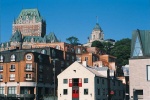 Auberge Saint-Antoine
Auberge Saint-Antoine
, dans l'arrond... -
 Auditorium et Batisse
Auditorium et Batisse
Y.M.C.A. Québe... -
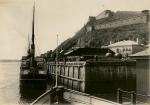 Bateau amarré au quai
Bateau amarré au quai
du port de Qué... -
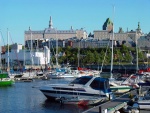 Belle illustration d’
Belle illustration d’
une ville à deu...
-
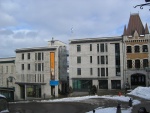 Centre d'interprétati
Centre d'interprétati
on de la Place ... -
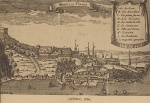 Cette gravure anonyme
Cette gravure anonyme
datant de 1700... -
 Château (Frontenac) e
Château (Frontenac) e
t Hôtel de vill... -
 Château Frontenac à Q
Château Frontenac à Q
uébec, «où Botr...
-
 Côte d'Abraham à Québ
Côte d'Abraham à Québ
ec -
 Côte d'Abraham à Québ
Côte d'Abraham à Québ
ec -
 Dans la Côte de la Mo
Dans la Côte de la Mo
ntagne, Québec... -
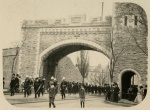 Départ d'un contingen
Départ d'un contingen
t de militaires...
-
 Détail d'une vue pano
Détail d'une vue pano
ramique de Québ... -
 Église Chalmers & édi
Église Chalmers & édi
fice Price, à Q... -
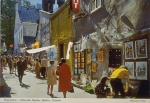 Exposition : Rue du T
Exposition : Rue du T
résor, Québec -
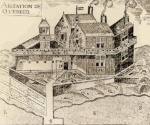 Illustration de la pr
Illustration de la pr
emière habitati...
-
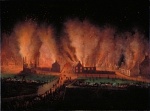 Incendie du quartier
Incendie du quartier
Saint-Jean à Qu... -
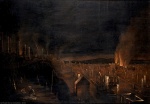 Incendie du quartier
Incendie du quartier
Saint-Roch vu d... -
 L'Auditorium (salle d
L'Auditorium (salle d
e spectacle), Q... -
 L'Édifice Price, rue
L'Édifice Price, rue
Ste-Anne à Québ...
-
 L'entrée de la Citade
L'entrée de la Citade
lle Québec, Can... -
 L'intersection des ru
L'intersection des ru
e St-Jean et de... -
 La basse-ville à Québ
La basse-ville à Québ
ec -
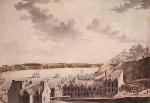 La Basse-ville de Qué
La Basse-ville de Qué
bec en 1778
-
 La Citadelle - Vue aé
La Citadelle - Vue aé
rienne de Québe... -
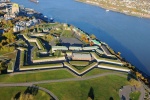 La Citadelle de Québe
La Citadelle de Québe
c bâtie par éta... -
 La Citadelle, Québec
La Citadelle, Québec
-
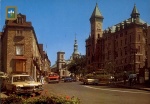 La Côte de la Fabriqu
La Côte de la Fabriqu
e, à Québec
-
 La côte de la Montagn
La côte de la Montagn
e, Québec -
 La Fête-Dieu à Québec
La Fête-Dieu à Québec
, 1944 -
 La gare du C.P.R. à Q
La gare du C.P.R. à Q
uébec -
 La haute-ville avec l
La haute-ville avec l
'édifice du Par...
-
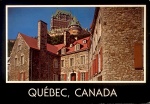 La Maison Chevalier,
La Maison Chevalier,
Québec -
La Maison McKenna. à
Québec -
 La Place d'Armes, le
La Place d'Armes, le
Château Fronten... -
 La porte Kent, à Québ
La porte Kent, à Québ
ec
-
 La porte Kent, constr
La porte Kent, constr
uite en 1879 ; ... -
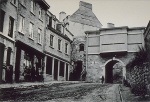 La porte Prescott ver
La porte Prescott ver
s 1870 -
 La porte Saint-Louis,
La porte Saint-Louis,
Québec -
 La porte St-Jean dans
La porte St-Jean dans
la ville de Qu...
-
 La porte St-Jean dans
La porte St-Jean dans
la ville de Qu... -
 La porte St-Jean, con
La porte St-Jean, con
struite en 1867... -
 La rue Champlain au C
La rue Champlain au C
ap Blanc, Québe... -
 La rue Petit Champlai
La rue Petit Champlai
n et l'escalier...
-
 La rue St-Louis Ouest
La rue St-Louis Ouest
et la maison d... -
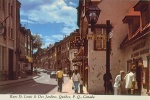 La rue St-Louis, Québ
La rue St-Louis, Québ
ec -
 La Terrasse Dufferin,
La Terrasse Dufferin,
la Promenade e... -
 La terrasse Dufferin,
La terrasse Dufferin,
Québec
-
 Le Cap Diamant et le
Le Cap Diamant et le
port -
 Le Château Frontenac
Le Château Frontenac
et la Citadelle... -
 Le Château Frontenac
Le Château Frontenac
et la Terrasse,... -
 Le Château Frontenac
Le Château Frontenac
vu à partir de ...
-
 Le Château Frontenac
Le Château Frontenac
vu de la Terras... -
 Le couvent des Urulin
Le couvent des Urulin
es fondé en 169... -
 Le fameux Monument de
Le fameux Monument de
Champlain érig... -
 Le funiculaire qui re
Le funiculaire qui re
lie la Basse-Vi...
-
 Le funiculaire qui re
Le funiculaire qui re
lie la Basse-Vi... -
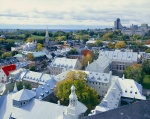 Le monatère des Ursul
Le monatère des Ursul
ines. On distin... -
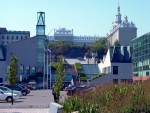 Le Musée de la civili
Le Musée de la civili
sation (Moshe S... -
 Le port de Québec
Le port de Québec
-
 Le Port de Québec vu
Le Port de Québec vu
du quai -
 Le Port de Québec, le
Le Port de Québec, le
s Fortification... -
 Le port vu du Parleme
Le port vu du Parleme
nt, Québec -
 Le Vieux Québec et le
Le Vieux Québec et le
port
-
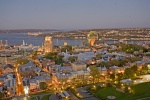 Le Vieux-Québec intra
Le Vieux-Québec intra
-muros dominant... -
 Les appartements de B
Les appartements de B
eaucours, rue S... -
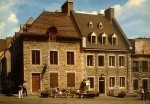 Les Maisons le Picart
Les Maisons le Picart
(1763) et Dumo... -
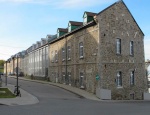 Les Nouvelles Caserne
Les Nouvelles Caserne
s, en attente d...
-
 Les Remparts, Québec
Les Remparts, Québec
-
 Maison Montcalm, Québ
Maison Montcalm, Québ
ec -
 Nouvel édifice Price
Nouvel édifice Price
Bros. Co. Ltd.,... -
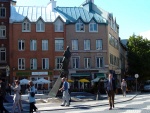 Place de la FAO. L’en
Place de la FAO. L’en
semble, art pub...
-
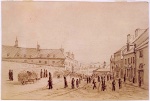 Place du marché à Qué
Place du marché à Qué
bec vers 1830... -
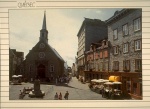 Place Royale, à Québe
Place Royale, à Québe
c -
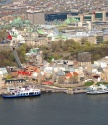 Place Royale, lieu où
Place Royale, lieu où
Champlain cons... -
 Première Habitation d
Première Habitation d
e Québec et rés...
-
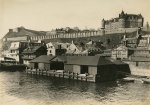 Quai et des hangars d
Quai et des hangars d
u port de Québe... -
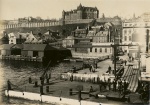 Quai et des hangars d
Quai et des hangars d
u port de Québe... -
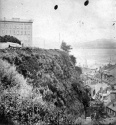 Quartier Vieux-Québec
Quartier Vieux-Québec
, vers 1880. Vu... -
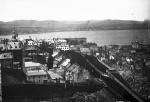 Quartier Vieux-Québec
Quartier Vieux-Québec
, vers 1888
-
 Québec. - Le Cap Diam
Québec. - Le Cap Diam
ant et ses viei... -
 Québec. - Rue St-Pier
Québec. - Rue St-Pier
re (Basse ville... -
 Québec. Car de touris
Québec. Car de touris
te -
 Québec. Rue sous le C
Québec. Rue sous le C
ap
-
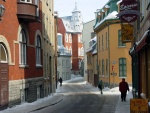 Rue Couillard, dans l
Rue Couillard, dans l
e Vieux-Québec:... -
 Rue de la Fabrique, b
Rue de la Fabrique, b
asilique et hôt... -
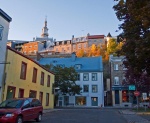 Rue des Remparts et r
Rue des Remparts et r
ue Saint-Paul, ... -
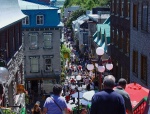 Rue Petit Champlain,
Rue Petit Champlain,
à Québec
-
 Rue Saint-Jean, Québe
Rue Saint-Jean, Québe
c -
 Rue Sous le Cap à Qué
Rue Sous le Cap à Qué
bec. La rue la ... -
 Rue Sous-le-Fort et l
Rue Sous-le-Fort et l
e funiculaire, ... -
 Tour Martello, à Québ
Tour Martello, à Québ
ec
-
Un coup d'oeil sur Qu
ébec. à partir ... -
 Une scène prise dans
Une scène prise dans
la basse-ville,... -
 Une vue de l'est à pa
Une vue de l'est à pa
rtir de la gand... -
 Une vue de Québec à p
Une vue de Québec à p
artir de l'édif...
-
 Vieilles maisons fran
Vieilles maisons fran
çaises, Québec... -
 Vue aérienne d'une pa
Vue aérienne d'une pa
rtie de Québec ... -
 Vue aérienne de Québe
Vue aérienne de Québe
c, Canada -
 Vue de la place du ma
Vue de la place du ma
rché et de l'ég...
-
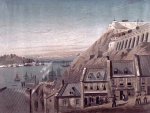 Vue de Québec depuis
Vue de Québec depuis
la porte Presco... -
 Vue de Québec depuis
Vue de Québec depuis
la porte Presco... -
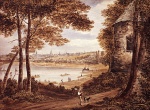 Vue de Québec depuis
Vue de Québec depuis
la tour Ronde, ... -
 Vue de Québec prise d
Vue de Québec prise d
'une toiture de...
-
 Vue générale du port
Vue générale du port
prise de la Cit... -
 Vue panoramique de Qu
Vue panoramique de Qu
ébec : terrasse... -
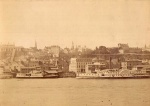 Vue panoramique de Qu
Vue panoramique de Qu
ébec prise de L... -
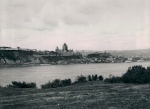 Vue panoramique de Qu
Vue panoramique de Qu
ébec prise de L...
Hyperliens
- Historic District of Old Québec on UNESCO website
- Historic District of Old Québec panoramic views
- Architecture et patrimoine de la ville de Québec

